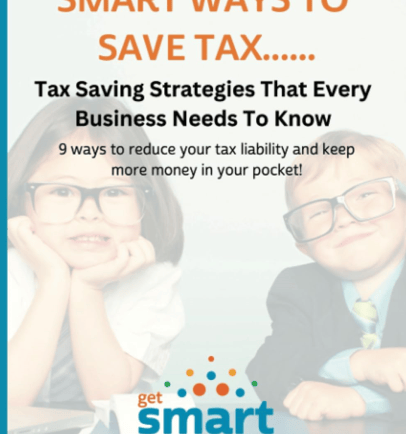new clients - Students/seniors $35 - Corp tax filing starts $800 - install app
Smart Tax Saving Strategies Every Business Owner Should Know
Smart Tax Saving Strategies Every Business Owner Should Know. You meet your accountant, and... surprise! You owe tax bills, they do not give you tax planning
4/26/20252 min read


Are You Leaving Money on the Table? Smart Tax Saving Strategies Every Business Owner Should Know
Imagine this:
You just wrapped up another busy year in your business.
You worked late nights, paid all your bills, invested in your growth — and now it’s tax time.
You meet your accountant, and... surprise!
You owe thousands more than you expected.
You wonder:
"Didn’t I pay enough already? Where did I miss out?"
👉 Truth:
Most business owners overpay taxes every year — not because they made mistakes, but because they didn’t plan ahead.
Let's walk through a real-life example:
Case Study: John's Small Business
John owns a small construction company.
In 2024, his net profit was $120,000.
He paid himself $90,000 in salary, thinking this was the "safe" choice.
He didn't use a tax plan — just filed at year-end.
Here’s what happened:
Category Amount Salary taxed personally $90,000 Corporate tax on profits $8,000 Personal tax ~$20,000 Total taxes paid ~$28,000
😬 Painful, right?
But here's the thing — with a few simple strategies, John could have saved over $8,000 in taxes.
What John Could Have Done Differently
1. Salary vs. Dividend Strategy
Instead of taking a full salary, John could have split his income:
$50,000 salary (covered his CPP and personal expenses)
$30,000 dividend (lower tax rate, no CPP payable)
This alone would have saved him over $3,000 in CPP contributions — and lowered his personal tax bracket.
2. Income Splitting with Spouse
John’s wife helped him with admin work but wasn’t on payroll.
If he had paid her a reasonable salary ($20,000 for admin tasks):
It would shift $20,000 into a lower personal tax bracket.
The business would get a $20,000 deduction.
Lower John's taxable income.
👉 Savings: About $2,500 to $4,000 in combined taxes.
3. Home Office Deduction
John often did paperwork at home but never claimed it.
He could have deducted:
Part of his rent/mortgage interest
Utilities
Internet
Home maintenance
A typical claim is $2,000–$4,000/year — reducing both corporate AND personal tax.
4. Vehicle and Meals Expenses
John used his truck for 80% business.
He didn’t track mileage properly, so he didn’t claim it.
Proper tracking could have let him deduct:
Truck payments or lease
Gas
Insurance
Repairs
Estimated missed deduction: $7,000 per year.
The Bottom Line:
👉 John could have reduced his taxes from ~$28,000 down to around $19,000.
👉 That’s $9,000 more in his pocket — every year.
Imagine reinvesting that extra money into marketing, hiring, new tools — or even a well-earned vacation.
What You Can Learn From This
✅ Plan Early: Don't wait until tax season. Meet your advisor mid-year to make moves while you still can.
✅ Use All Deductions: Know what the CRA allows — and track everything carefully.
✅ Mix Salary & Dividends: It's not one-size-fits-all. A smart mix depends on your goals and cash needs.
✅ Family Planning: Spouse, kids over 18, even parents can sometimes be part of your tax strategy.
Feeling Like You Might Be Missing Out?
💬 We help businesses like yours build smart, CRA-compliant tax strategies — so you keep more of what you earn.
We offer a FREE Tax Planning Session to show you exactly where you could save.
👉 Book your free consultation now: Your Booking Link
Don't let another year go by paying more than you need to.
You built your business — now let's protect your profits. 💼💰
#SmallBusinessTax #TaxSavings #BusinessOwnerTips #EntrepreneurLife #TaxPlanning #SaveOnTaxes
Services
Personalized tax preparation and consulting for all.
Location:
Support
email: info@tikitax.com
Phone:(+1).236.788.7799
© 2024. All rights reserved.
2339 HW 97, Kelowna, BC, Canada
145 Chadwick Ct Suite 220, North Vancouver, BC V7M 3K1
